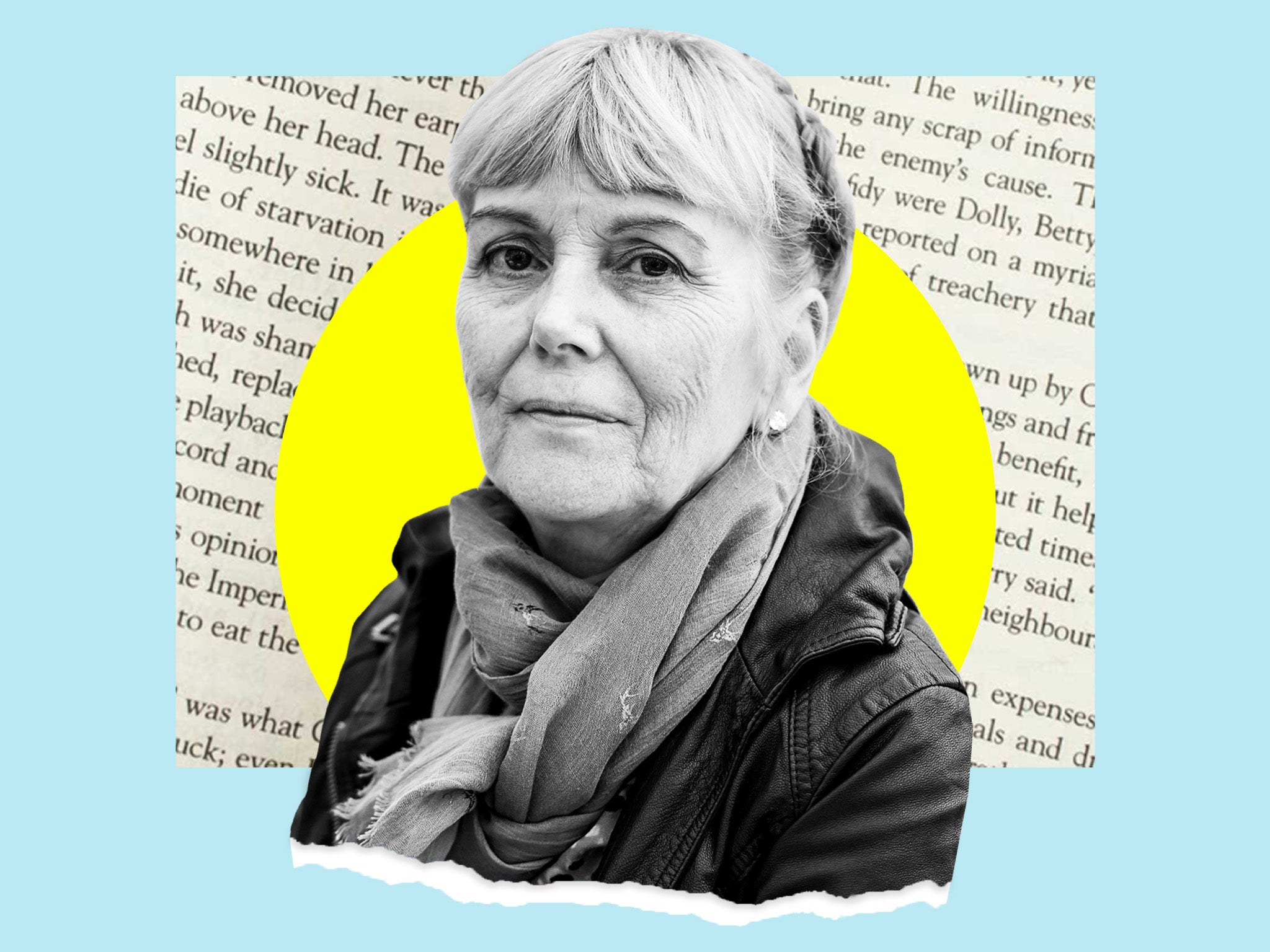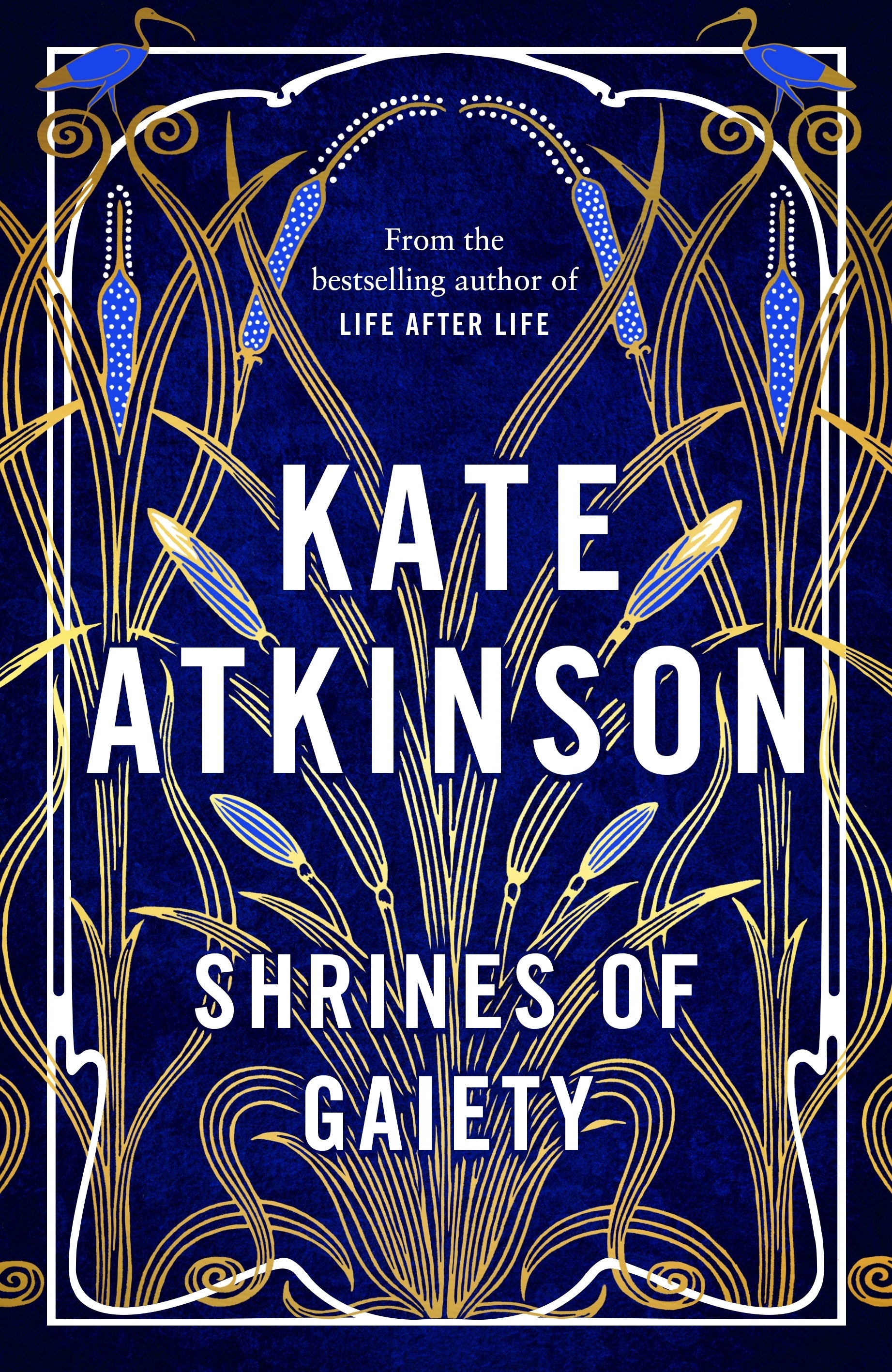‘Oh, she gets away with so much’: The mischievous world of Kate Atkinson
Kate Atkinson’s books have won prizes and been made into TV dramas, but the author prefers to let her work speak for itself. As her 12th novel ‘Shrines of Gaiety’ is released, Nick Duerden explores how she became one of our most brilliantly idiosyncratic bestsellers


Your support helps us to tell the story
From reproductive rights to climate change to Big Tech, The Independent is on the ground when the story is developing. Whether it's investigating the financials of Elon Musk's pro-Trump PAC or producing our latest documentary, 'The A Word', which shines a light on the American women fighting for reproductive rights, we know how important it is to parse out the facts from the messaging.
At such a critical moment in US history, we need reporters on the ground. Your donation allows us to keep sending journalists to speak to both sides of the story.
The Independent is trusted by Americans across the entire political spectrum. And unlike many other quality news outlets, we choose not to lock Americans out of our reporting and analysis with paywalls. We believe quality journalism should be available to everyone, paid for by those who can afford it.
Your support makes all the difference.Kate Atkinson always did have a knack for book titles. Her novels – all 12 of them – have boasted names that were sometimes long and sometimes unwieldy, but always memorable. There was Behind the Scenes at the Museum, for example, or Started Early, Took My Dog. A God in Ruins would look striking in any font, while Human Croquet conjured up all sorts of intriguing visual images.
Nevertheless, when she presented her latest novel to her editor last year, relaying with habitual Atkinson confidence what she was planning to call it, there was a collective intake of breath.
“Shrines of Gaiety,” says Larry Finlay, her publisher at Transworld. He says it slowly, as if weighing each individual word. “Shrines, of, Gaiety. Yes, there was definitely a little bit of ‘oooh’ in response. But,” he adds, diplomatically, “I do think it works, actually. In fact, I think it’s rather genius.”
Given she’s produced multiple bestsellers for him over the past quarter of a century, perhaps Finlay’s reaction is unsurprising – but he stresses that there is a line, and that he is not always willing to cross it.
“Take her second Jackson Brodie novel,” he says, of Atkinson’s ongoing crime fiction series, “which is called One Good Turn. Kate originally wanted to call it The Jolly Murder Mystery. We had a row about that one.”
Kate Atkinson occupies rarefied airspace within British literature. Effortlessly straddling the overlap between the literary and the commercial, she’s one of the country’s most beloved novelists: her books become bestsellers simply because they are by Kate Atkinson. Her latest, then, will be another sure-fire hit, and likely won’t be held back by its title, clunky as it undeniably is.
Shrines of Gaiety is a convergence of two of Atkinson’s recurring genres: the historical novel and the police procedural. It tells the story of Nellie Coker, owner of a string of nightclubs in London’s Soho in 1926. Coker is indomitable, a woman for whom the law is there to be broken should it suit her purpose (it often does). Released from a brief stint in prison, she returns to her empire, which she manages with far more success than she does her six children. There are echoes of TV’s Succession within Shrines of Gaiety, with its matriarch surveying her bloodline to decide who most deserves to take the business over, only to find each of the candidates wanting.
Because this is a Kate Atkinson novel, there is a secondary plot, involving two runaways who arrive in London seeking fame and glamour, and a third, in which a weary police detective employs a spy to infiltrate Coker’s clan in the hope of bringing her down permanently.
It’s a book that teems with people and places, events and incidents, and is written with the garrulous enthusiasm for which its author has rightly become celebrated. If it’s occasionally suffused with cliché, then perhaps it’s because, as Atkinson once said, “I like to take clichés and work with them.” Here, things “open with a bang”, and “take off like a rocket”. Origins are “lost in the midst of time”. On almost each of its 435 pages, there are authorial asides conveyed in brackets, as if Atkinson were winking at us, the reader, while whispering arch digressions from the side of her mouth.
“(What did Florence do with her time?)” one reads. Another: “(She was 25!)” Another still: “(She was her mother’s daughter.)” The book may well convey more bracketed sidebar information than any other novel written in the English language.
She immediately places you within a situation, and in a particular timeline, and you feel as if you’ve known her characters all your life
“Oh, she gets away with so much, doesn’t she?” Finlay says. “So much breaking the fourth wall in the middle of what may otherwise be a really tense moment between characters. I have to say,” he continues, “I wouldn’t allow any other writer to get away with that kind of thing – I’d have my blue pencil out immediately! – but Kate? Kate makes it work beautifully.”
Atkinson came to writing comparatively late in life. Born in Yorkshire in 1951, she worked as a secretary and a teacher and was married twice (she has two children, one from each marriage) before she started to take her writing seriously. Her first novel, Behind the Scenes…, was published in 1995, when she was 43. It won the Whitbread Prize, beating Salman Rushdie’s The Moor’s Last Sigh. Joanna Cannon, the author of The Trouble with Goats and Sheep and Breaking & Mending, and a former junior doctor – who, like Atkinson, didn’t turn to fiction until midlife – discovered her shortly after, in her local library.
“And I’ve been reading her ever since. It’s all to do with connection at the end of the day,” Cannon says, “a connection a book makes with a reader. It’s actually a very difficult thing to do, but Kate does it so well, and so quickly. She immediately places you within a situation, and in a particular timeline, and you feel as if you’ve known her characters all your life. Even minor characters are so well drawn.”

It was Hilary Mantel who suggested that Atkinson “has a game-plan more sophisticated than Dickens’s” – a nod to the amount of activity in her books, and the number of characters that jostle for space. Rarely are there wallflowers. This was never more true than in her most celebrated novel, 2013’s Life After Life, the story of a woman fated to live her life over and over again, always dying before her time, and often in unpleasant ways: suicide, murder, illness. It was a kind of unfunny Groundhog Day in which the protagonist must subliminally learn from the misjudgements and errors of previous lives in order to survive longer in the next. During one incarnation, for example, she manages to avoid the abusive husband she married in an earlier one; in another, she kills Hitler. The book won the Costa Award for Best Novel, as did its 2015 sequel, A God in Ruins.
As with her crime novels – which feature the crumpled-but-appealing detective Jackson Brodie, and ran for two series as Case Histories on the BBC, with Jason Isaacs playing the lead – Life After Life had a subsequent life of its own when it was turned into a BBC drama earlier this year.
“I knew that many people had tried to adapt it over the years, mostly as a film,” says Bash Doran, who wrote its screenplay, “but I was very adamant it should be a piece of television. I thought it was an extraordinarily complex book, a piece of philosophy almost, and for me the challenge was not simply to focus on this superhero whose job ultimately was to kill Hitler, because it went so much deeper than that, and was so much more profound. It was about life, and how to live it. Kate’s an incredible writer.”
Atkinson herself hasn’t said much about either adaptation, but then, she says very little about most things. Unusually for a successful modern novelist, she’s an enigma. She lives in Edinburgh, far from what she sees as the madding crowd, and rarely gives interviews. She has recently barred any of her future books from being entered in literary competitions, perhaps because of repeatedly being overlooked by the Booker (“Their loss,” posits Finlay), and she finds merely talking about her work taxing, once suggesting that to be asked what her books are about would be “the most loathsome question. Why bother to write something if you then have to explain it? It is what it is. It’s about things.”
At the age of 70, then, Atkinson is a throwback, an old-fashioned writer, not on social media, never in the gossip pages. She’s someone who simply wants her work to exist on its own terms, on the page, and to be enjoyed – privately – by a reader who accords her the luxury of being left well alone so that she can get on with writing her next book, and the one after that.
(And, frankly, who can blame her?)
‘Shrines of Gaiety’ is published on 27 September



Join our commenting forum
Join thought-provoking conversations, follow other Independent readers and see their replies
Comments